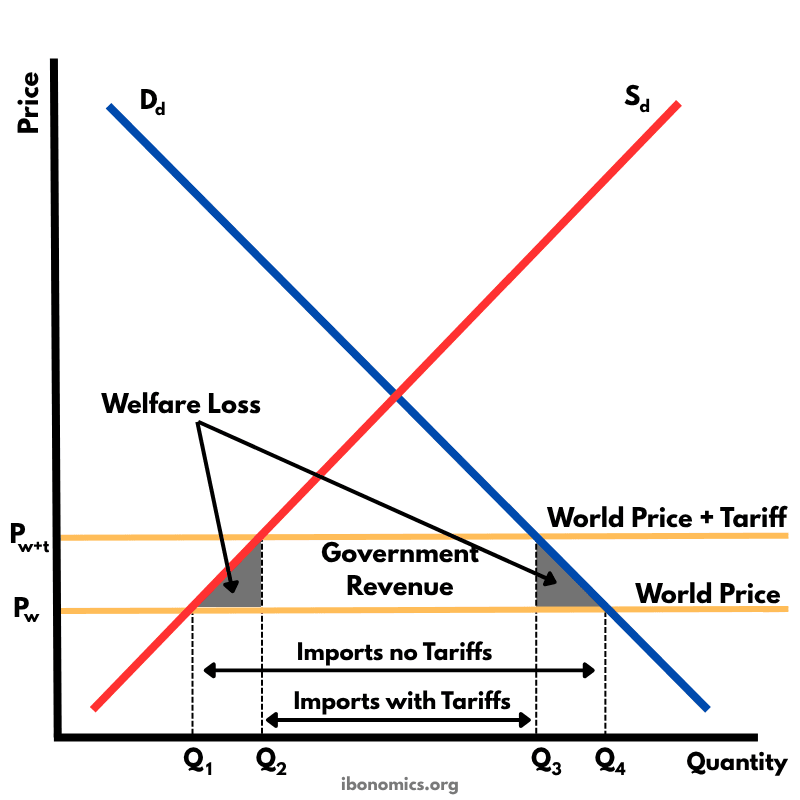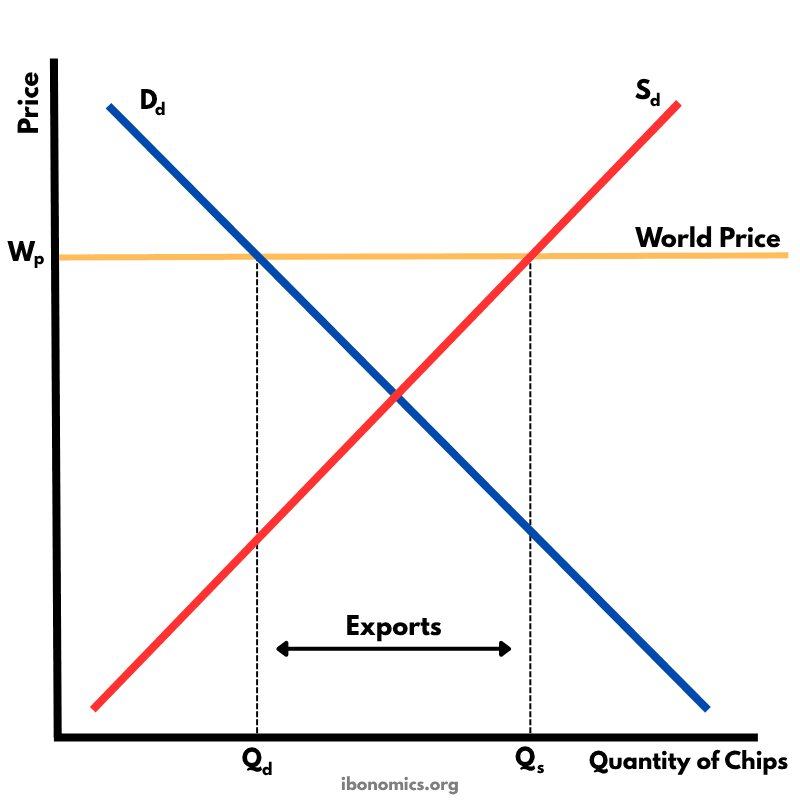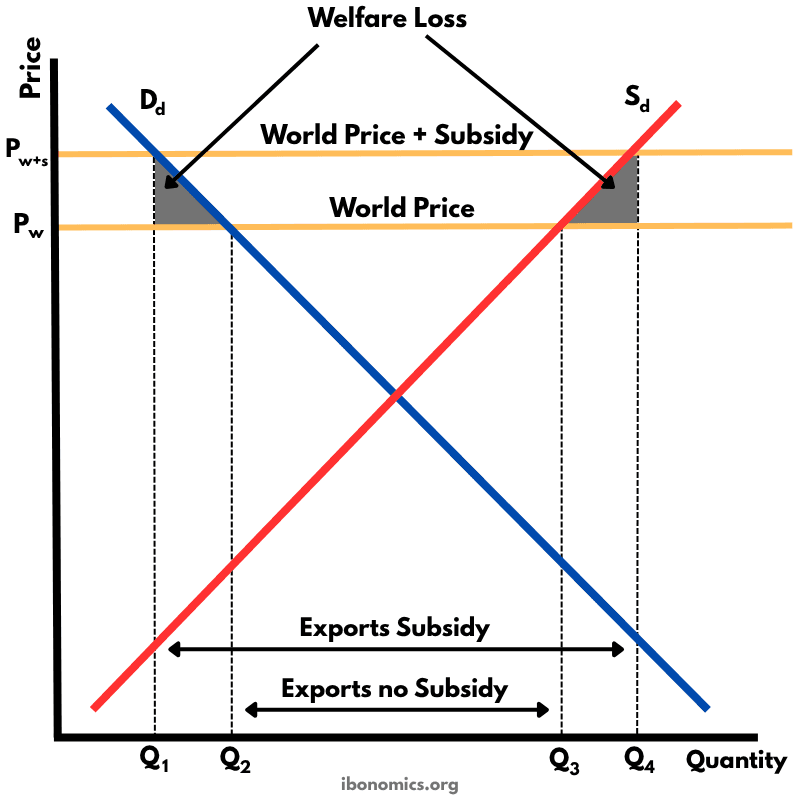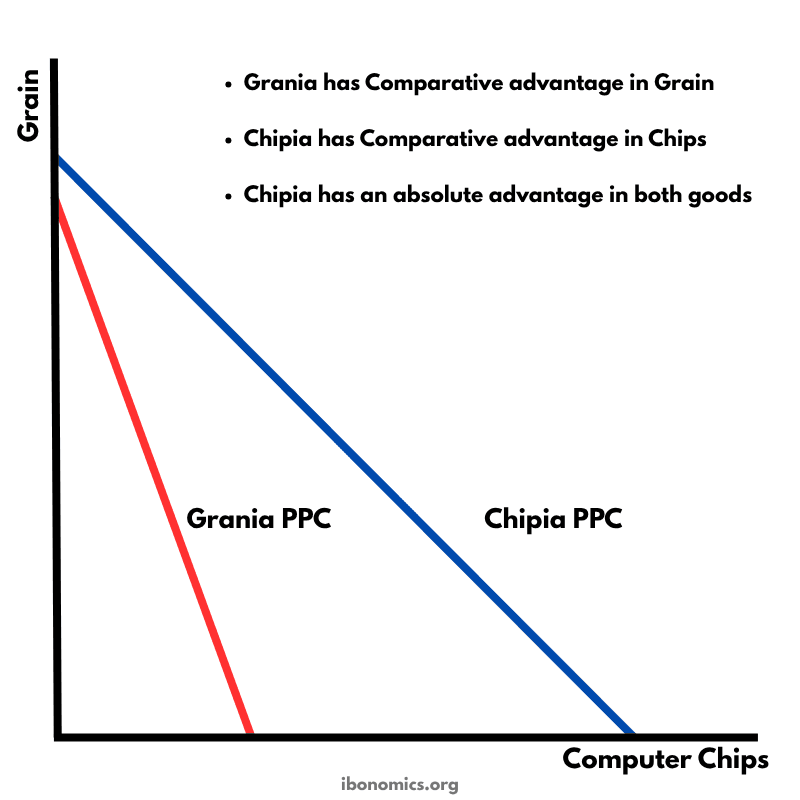Tariff Diagram – Protectionism
This diagram shows the effects of a tariff imposed on imported goods. A tariff raises the price of imports, protecting domestic producers but creating welfare losses.

dd
Dd: Domestic demand curve for the good.
sd
Sd: Domestic supply curve for the good.
pw
Pw: World price under free trade conditions.
pw tt
Pw+T: Price with tariff imposed.
q1
Q1: Domestic quantity supplied under free trade.
q2
Q2: Domestic quantity supplied with tariff.
q3
Q3: Quantity demanded with tariff.
q4
Q4: Quantity demanded under free trade.
imports no tariffs
Imports without tariff: Q4 - Q1.
imports with tariffs
Imports with tariff: Q3 - Q2.
government revenue
Government Revenue: Area of the rectangle formed between Q2 and Q3 at the tariff amount.
welfare loss
Welfare Loss: Deadweight losses represented by two triangles on each side of the tariff revenue rectangle.
Under free trade, the world price (Pw) allows for cheaper imports, leading to higher quantity demanded (Q4) and lower domestic production (Q1).
When a tariff is imposed, the price increases to Pw+T (world price plus tariff), reducing imports to the range between Q2 and Q3.
Domestic producers increase supply from Q1 to Q2, while domestic consumers reduce demand from Q4 to Q3 due to higher prices.
The government earns tariff revenue on each unit imported (Q3 - Q2), while two deadweight welfare losses occur: one from inefficient domestic production and one from reduced consumption.
Tariffs protect domestic industries in the short run but may reduce overall welfare and lead to retaliation in global trade.
More Global Economics Diagrams
Explore other diagrams from the same unit to deepen your understanding

This diagram shows how a country exports goods under free trade when the world price is higher than the domestic equilibrium price.

This diagram illustrates how a country imports goods under free trade when the world price is lower than the domestic equilibrium price.

This diagram illustrates the effects of an import quota, a trade protection measure that limits the quantity of a good that can be imported. Quotas raise domestic prices, benefit local producers, and reduce consumer surplus.

This diagram illustrates the effects of a production subsidy, where the government supports domestic producers to lower their costs and increase output. It is a form of protectionism without raising consumer prices directly.

This diagram shows how an export subsidy raises the domestic price above the world price, encouraging producers to export more while reducing consumer welfare and creating deadweight losses.

This diagram uses production possibility curves (PPCs) for two countries—Grania and Chipia—to illustrate absolute and comparative advantage and the potential gains from trade.